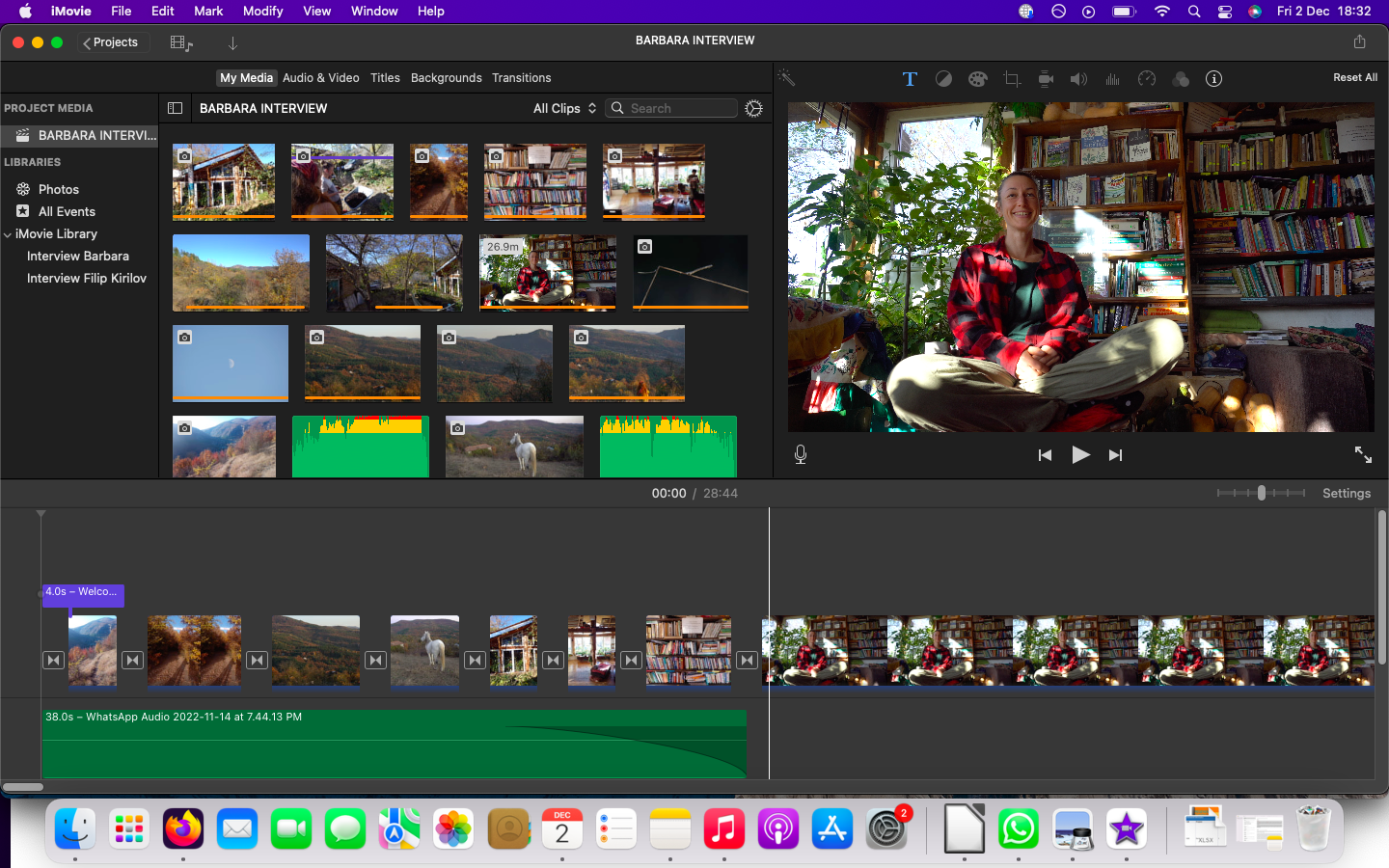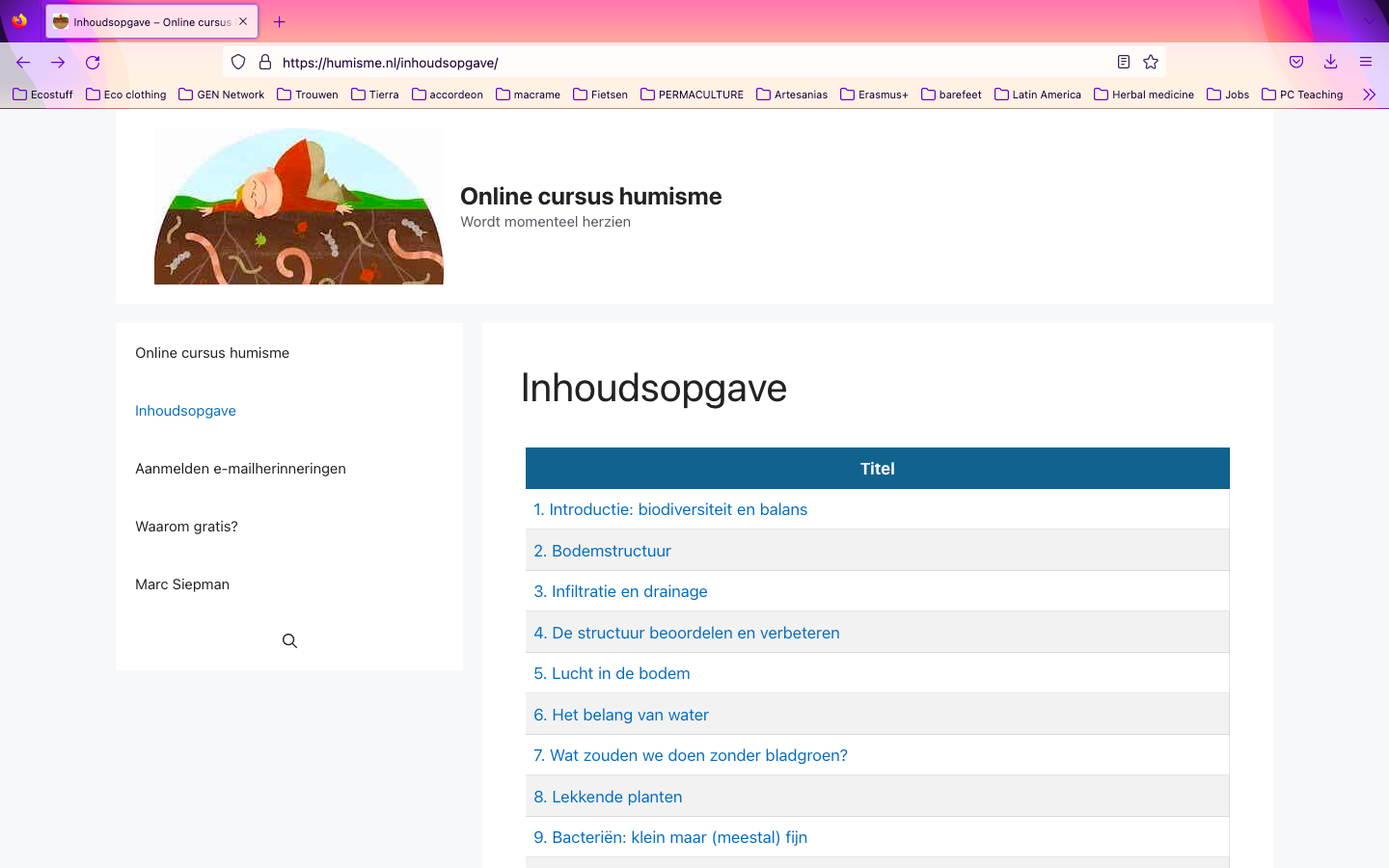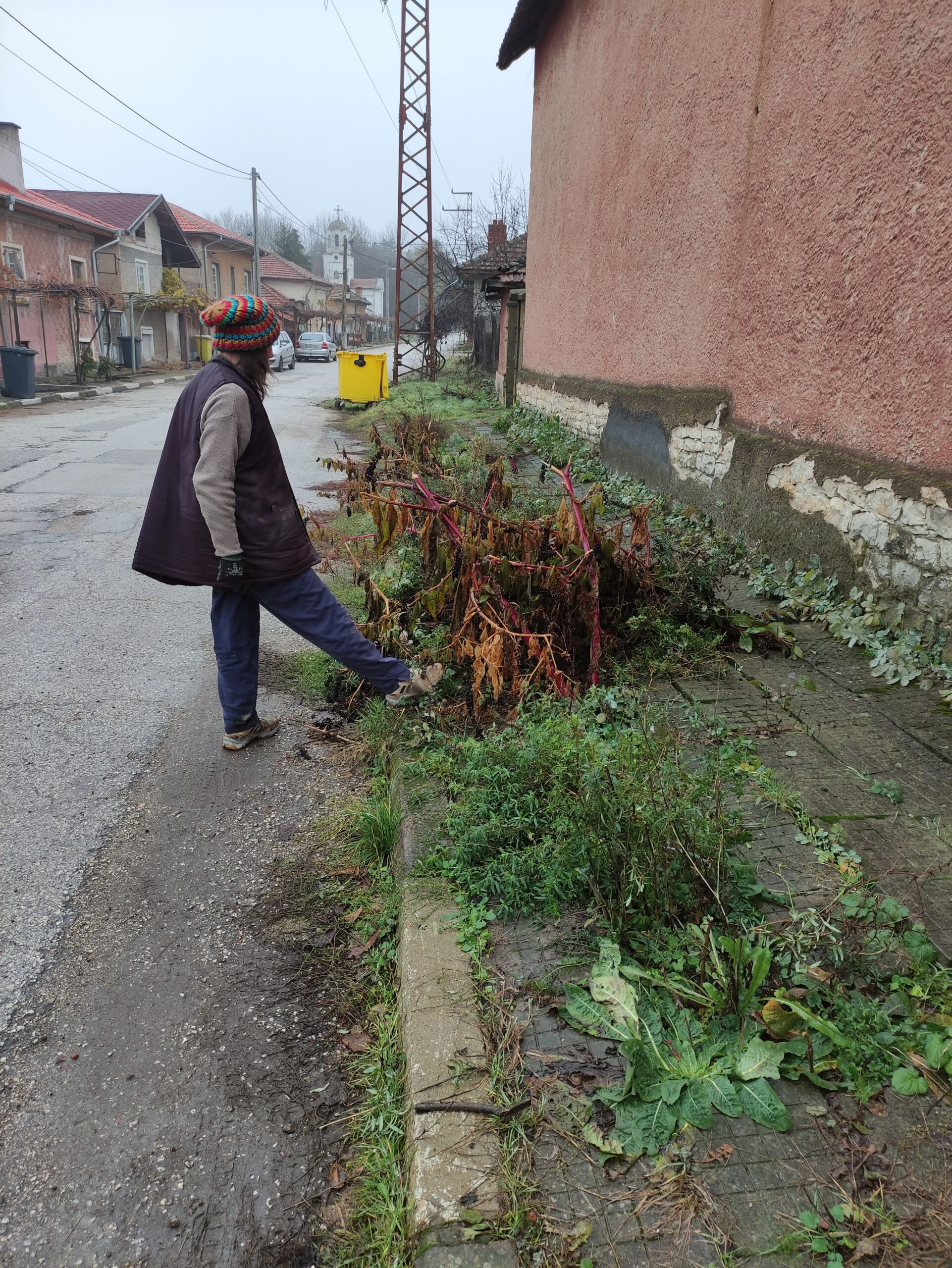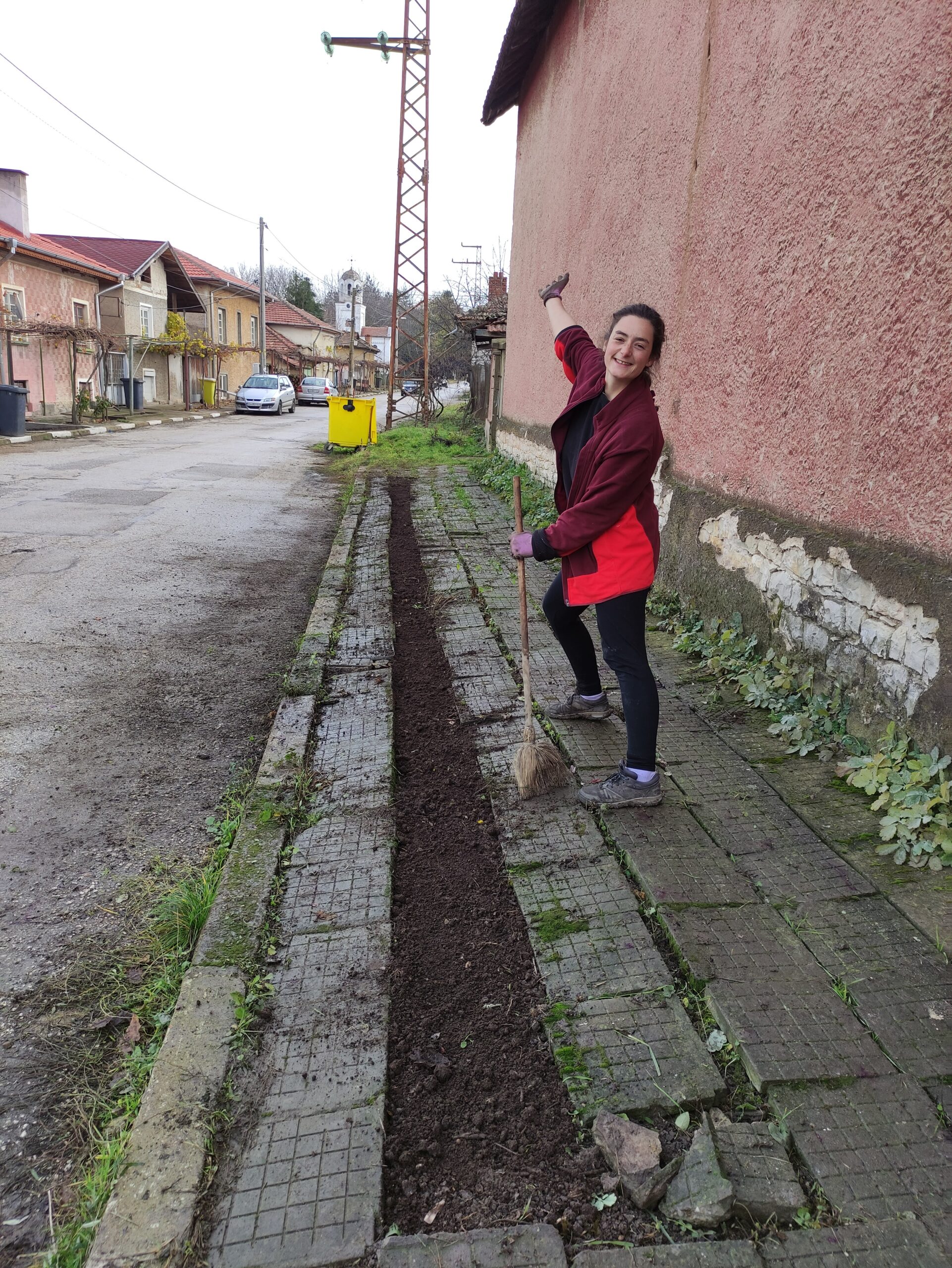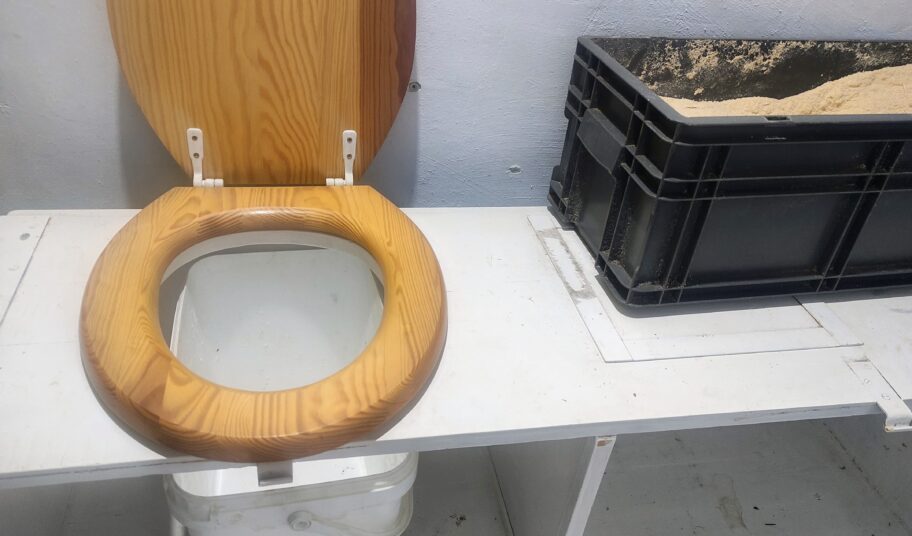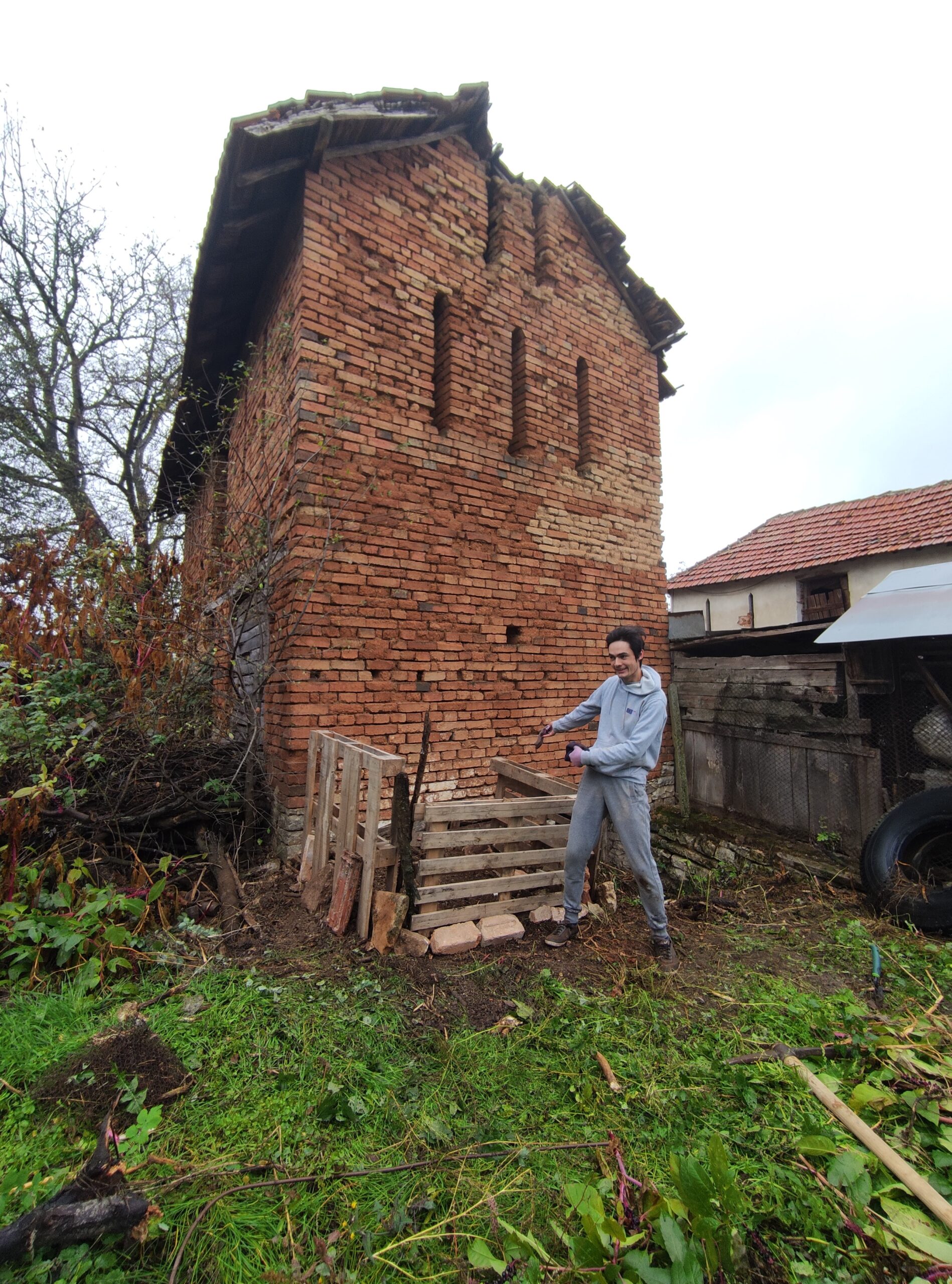Mali:
Zdraveite!
A little update after a rainy week in the village of Bryagovo. The past days we continued our online endeavours, as our local hosts of Fidanato farm fell sick after they had returned from their holidays. This also means that the activities we wanted to speak about with the mayor, like the compost workshop or a clean-the-river action, have to wait till next week as we need Alex or Miriam as support in translation. Also the interviews with elders about the seed library will have to wait till everyone is better again.
Besides other things, I focused on finishing the montage in iMovie of the two video interviews we did with Barbara and Filip at Vegetarium one month ago. I also worked a bit on the podcast interview with Sophie from Ura Gora, opening an account at SoundCloud for the permaculture association (check out here), where all future podcasts can be uploaded. I hope to share the two finished video projects of Vegetarium next week, as we will need to use Wi-Fi from Fidanoto – an upload of a few gigabytes can take hours and we don’t have our own Wi-Fi yet. In the photo below I give a little snapshot of the interview with Barbara, discovering all the buttons in iMovie, learning how to add music to the video to give it a bit more feeling. I discovered that I really enjoy this kind of creative work – especially if the product can be of inspiration to others and help a beautiful project like Vegetarium get more visibility 🙂
Renzo and I also brainstormed and discussed a bit more on what content to use for the compost workshop based on the earlier designed structure. You could go so much into depth on this topic and approach it from so many different angles.
As we are ourselves are not the greatest compost experts, we felt some discomfort in talking to others about it as if we are some foreign experts. We were composting our kitchen wastes in my ecovillage (as well as making humanure), but not always sure what to throw on it and how to maintain it. I remember when we decided to invite a compost expert to run a practical composting workshop to get more conscious about this essential practice. We were also just learners in sustainable living, realizing the need of someone with more practical and theoretical understanding. I thought why not share a video of this famous Dutch composting guy, Mark Siepman 🙂 in this video (titled “composteren kun je leren” – which rhymes in Dutch and means ‘composting you can learn’) you hear him speak about composting (if you put automatic translation to English, you can follow it quite well). And on one of his websites about composting (see image below of his homepage that he is currently renewing), he shares a complete course on composting for free – also in Dutch, but let Google translate be your friend 😉 I really see him as someone living and breathing the permaculture principles and ethics; he travels around the Netherlands and Belgium, offering workshops and courses on composting all on donation basis. He is able to live from this, you could see it as some sort of basic income that people contributed to him, for the work he is doing. He is also a really great writer and translated several permaculture works to Dutch.
Back to ‘being an expert’… Just like Mark Siepman shows, to me being an expert, is as simple as doing and living what you preach and teach. So I am glad we started our own little compost since we arrived in Bryagovo a month ago, even though we might not see the final outcome of it by the time our project ends. Today we added another layer of kitchen scraps and more carbon rich material, turning it all a bit to create some more aeration.
Especially with permaculture, empirically having tested and seen what works and what doesn’t, and having taken the time to analyse the why, and learning from your ‘mistakes’, is the practical expertise that can add a good layer of trust when teaching to others. It doesn’t mean that you’d then all of a sudden be ‘all-knowing’, as being knowledgeable about a certain composting technique functioning well in the arctic, wouldn’t mean you’d have the same success in the tropics. And if only it was so easy that merely ecology and climate would be of influence – let’s not forget about differences in culture, politics, land tenure systems, etc. In any case, Renzo and I realised we are ‘experts’ to the level that we probably know and understand a little more than our potential participants, the local people from Bryagovo. Which is great, this little difference, because surely they can probably also teach us a lot from their generations of experience in gardening. And I am really curious how they will perceive and receive us and the practices we will speak about.
Wishing you a lovely weekend!
Mali
Chloé:
As promised, here is the second infoboard about phytoterapy. This week, we will focus on spices and plants that can be found in the kitchen. Of course, there are many other but I choose to focus on 5 that I like, especially garlic because I think a lot of people use it regularly in their cooking.
Here it is 🙂
Here you can also see the great difference we did in our house entrace… Now beautiful bulbs will be waiting for us in Spring!
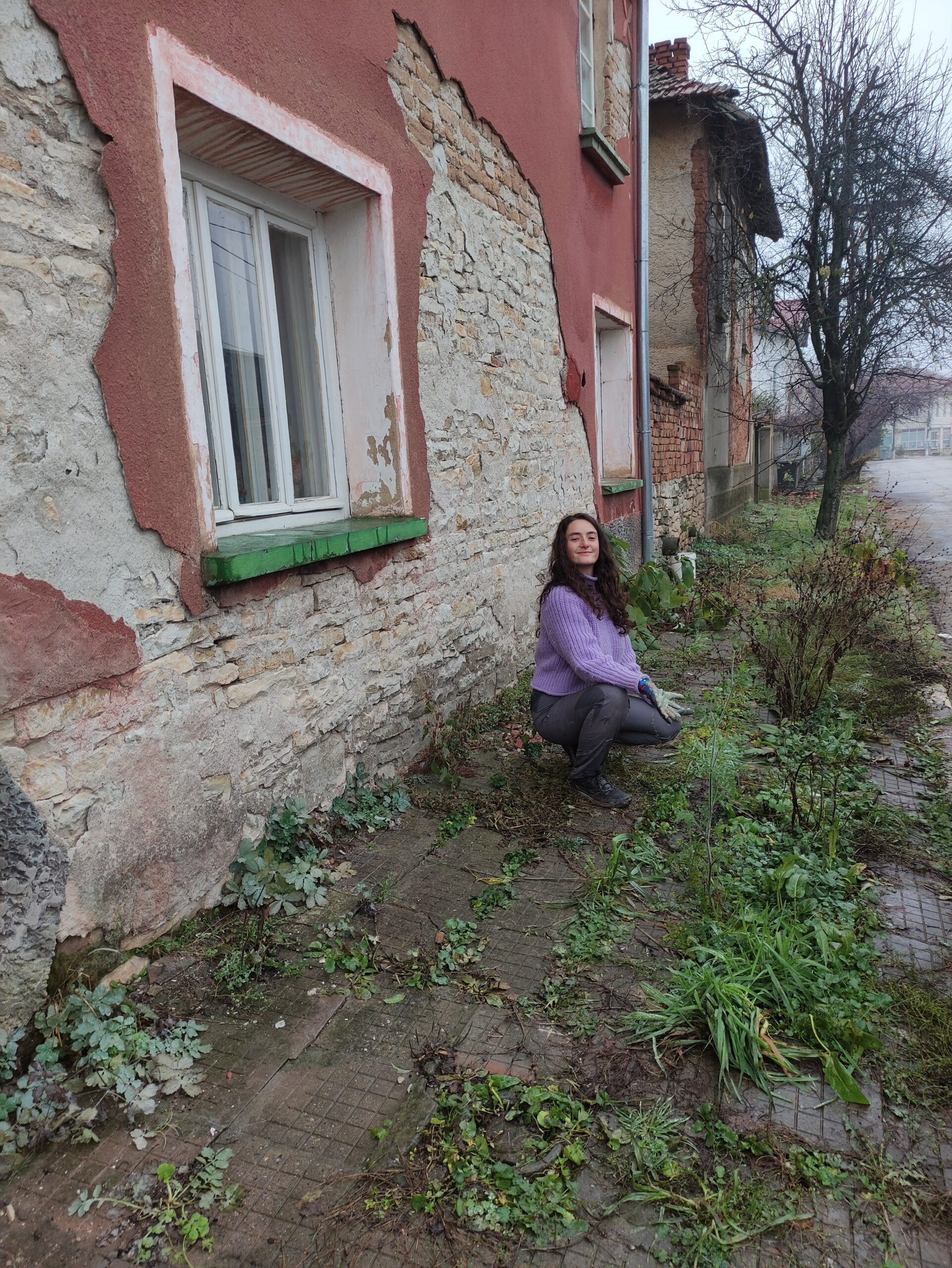
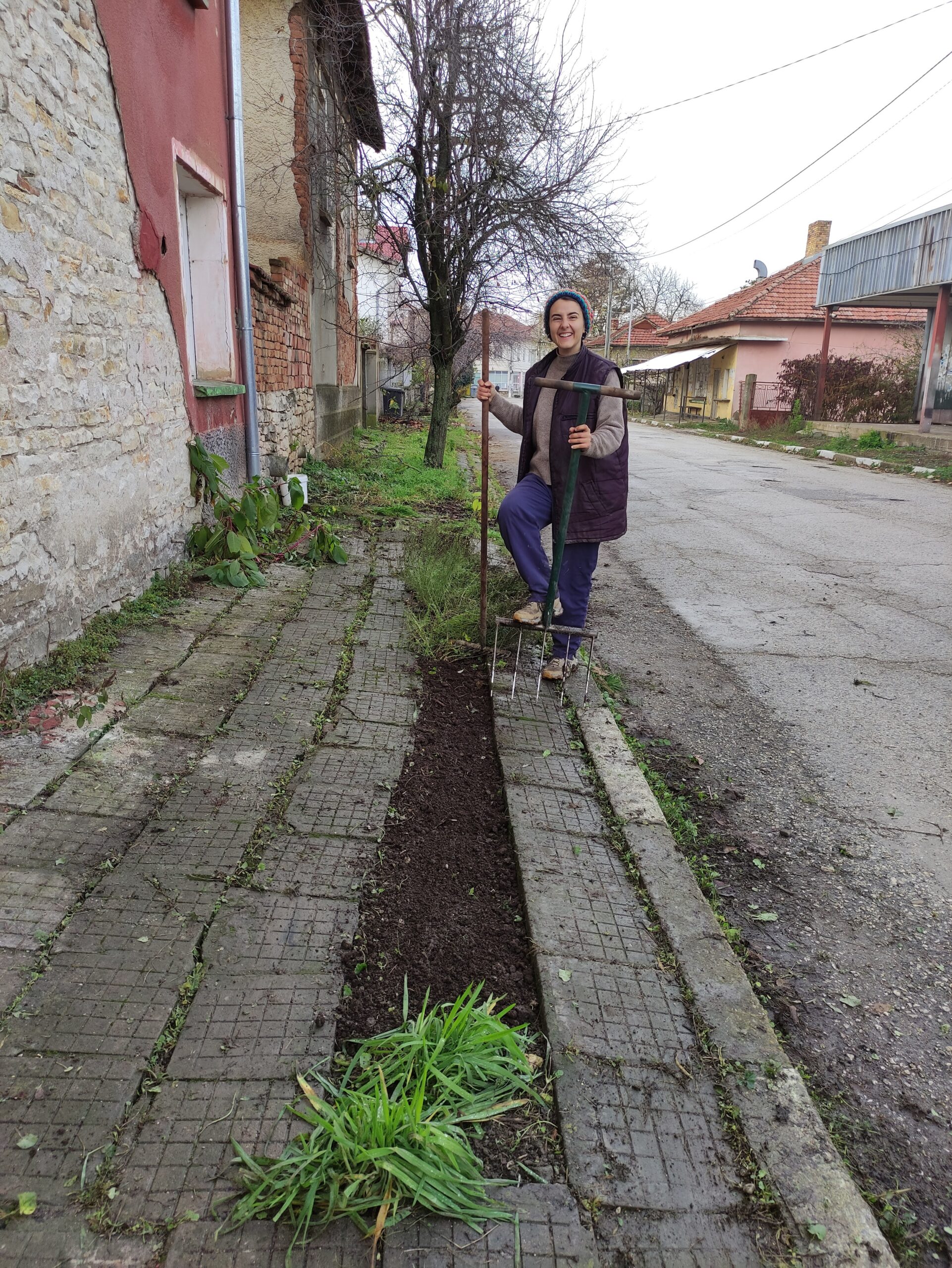
Before and after of our mini garden, no weeds and extra compost on top to build a nice soil! (photo credit: Paula Ochoa Sánchez)
Paula:
здрасти dear readers!
This week I realised how much my life has changed as I discover that the word compost is part of my everyday vocabulary. When you change so does the way you speak, I imagine. It is so satisfying to live a sustainable life that I would not have been able to dream of a year ago… Well, let’s focus. Another word that is also in everybody’s everyday vocabulary is toilet, so… what about knowing a little bit more about these two terms? And it turns out that last week we helped some friends to build their own compost toilet. Easy-peasy!
Apart from being a much more sustainable alternative, here you can find some good reasons to change to compost toilet:
- Excrements are not a waste, by composting human faeces and urine we return needed nutrients to the land.
- Waterless system. It is estimated that flushing toilets consume around 35000 L/person/year of clean water. Mixing drinkable water with human solids and sending them to a treatment plant is wasting two valuable resources. Therefore, by using compost toilets you will save money in water bills.
- Great solution for those people who has limited access to basic sanitation (places usually linked to rural poverty) or festivals.
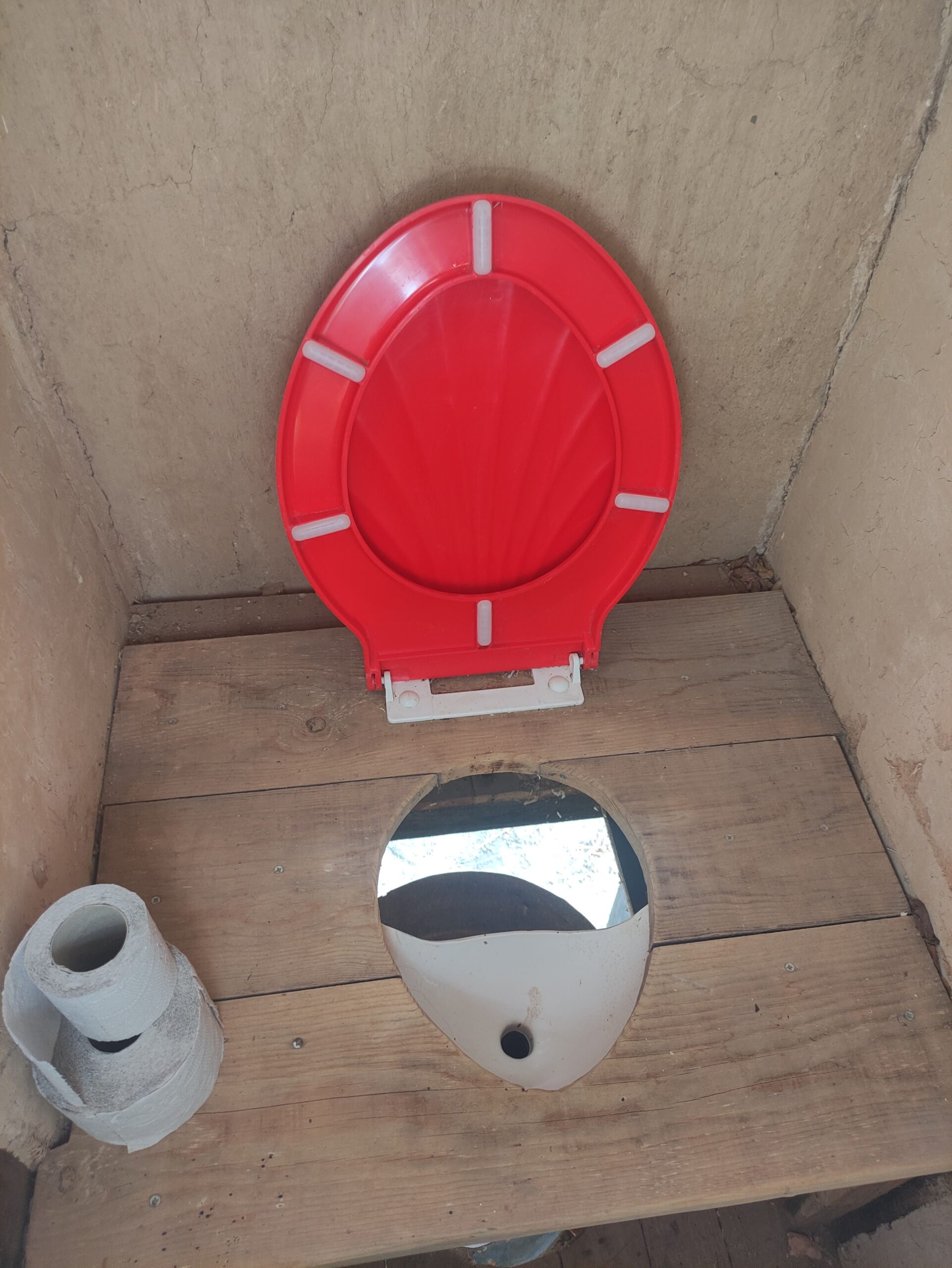
Examples of different compost toilets during my time in Bulgaria. First: Eco-camp Ezerets with pee separator; Second: our toilet at home. (photo credits: Paula Ochoa Sánchez)
There are several options for methods and styles of compost toilets. I have to admit that I have spent hours and hours reading about different ways of approaching composting humanure and there is no agreement on the topic… Embrace diversity!
In situ composting systems. The composting occurs in the same place where the toilet is, and it consists of a toilet superstructure and a single pit (dug on the ground 1 – 1,5 m depth) or receptacle to be filled up. After every visit to the toilet add dry material on top. Once the pit is nearly full, the content is covered with a generous layer of topsoil and left to compost (low temperature). The toilet superstructure is then moved to another receptacle as composting finishes in the previous one, which usually takes around 12 months. Arborloo is an example of this kind of toilets and in addition, a young tree is planted in the topsoil.
Batch systems which collect material in a bin or container and then process the material in the same container in a separate location.
Container collection systems. This is the kind of compost toilet we use at home, and it has three key components:
-
- Collection device. It can be a plastic bucket, where the poo, the toilet paper and the pee are collected. A nice, comfortable, and toilet-looking structure covers it. Once the bucket is full, we empty and clean it, so it is ready for using again.
- Cover material. A fine organic material that will completely cover the humanure after every use. Our cover material is fine sawdust, but it can also be utilised rice hulls, coco coir, or sugarcane bagasse. Its role is to prevent odour, absorb moisture, and prepare the material for composting.
- Compost pile. Human residues from the collection device end up here. The first step is creating a compost pile where faeces, urine and toilet paper are degraded above ground by microorganisms (bacteria, fungi) and other compost-organisms (earthworms and small insects). For an optimum composting process, we have to pay attention to aeration, moisture content, carbon/nitrogen ratio, and the size and temperature of the pile.
Aerobic bacteria are essential for this process and the presence of oxygen assures a faster breakdown of the waste, produces no odours, and generates enough heat to ensure pathogens die off (thermophilic composting). When building a new bin, shape the floor on the bottom like a shallow bowl and fill it with organic material to create a thick layer between the humanure and the soil that will absorb liquids draining from the initial deposits. This is called a “biological sponge” and can be made of loose grass, leaves, weeds, hay, straw. The C/N ratio should be around 25:1, so it is recommended to add to the pile drier materials that are higher in carbon. You should always add fresh organic material INTO the compost pile by pulling the cover material layer aside from the top of your compost pile and then covering everything back. The compost should always be moist, and can even be wet, which is why we add urine to our compost pile. If the compost seems too wet, simply add more cover material when adding wet organic material to the pile.
We created this structure for our compost pile using palets. Here François happy with the result. (photo credits: Paula Ochoa Sánchez)
Urine diverting dilemma > Depending on whom we are reading, urine can be managed in different ways. Some people, such as Joseph Jenkins, defend that it can be mixed with faeces as sawdust will soak up excess liquid or more dry material will be add to the pile. However, other people warn that pee could turn the process anaerobic and even that ammonia could kill microorganisms involve in composting. Separating or not pee and poo, you should know that urine contains most of the nitrogen, phosphorus, and potassium we release so it is a great fertilizer for plants.
For today’s post I have been reading (among many others) “The Humanure Handbook” which is a great help for discovering the composting world. This book and many other free resources about composting human wastes are available for free in this website owned by Joseph Jenkins http://humanurehandbook.com/.

